Beta Pictoris b in Pictures: An Alien Planet Image Gallery
Artist’s Impression of the Planet Beta Pictoris b

This artist’s view shows the planet orbiting the young star Beta Pictoris. This exoplanet is the first to have its rotation rate measured. Its eight-hour day corresponds to an equatorial rotation speed of 100,000 kilometers/hour — much faster than any planet in the Solar System. [Read the Full Story Here]
Star Beta Pictoris
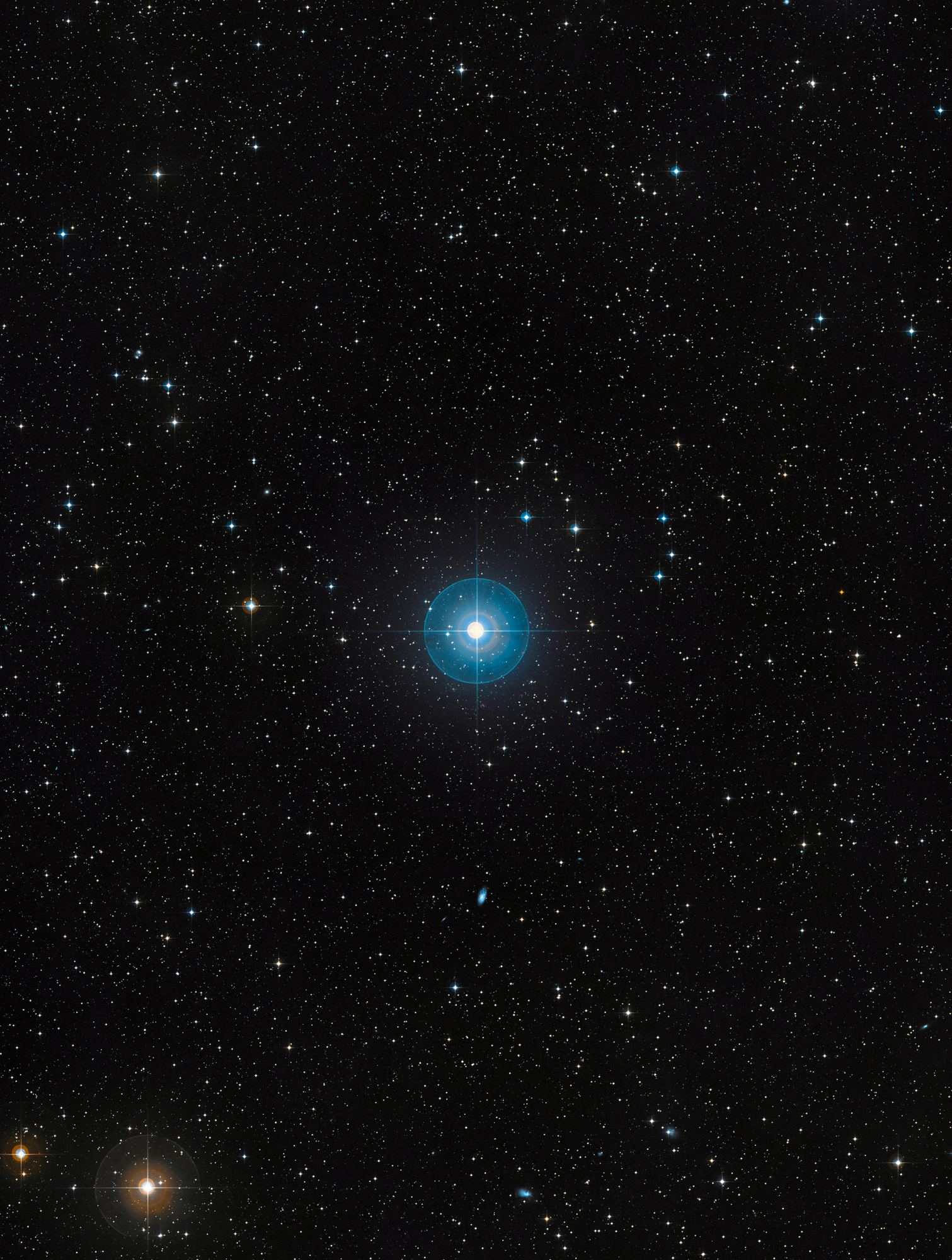
The star Beta Pictoris (center) is located 63 light-years from Earth in the constellation Pictor, the Painter, and is about 12 million years old and 75-percent more massive than our sun. Image from the European Southern Observatory's Digitized Sky Survey 2. [Read the Full Story Here]
Whirling Dervish: Fastest-Spinning Exoplanet Discovered (Infographic)
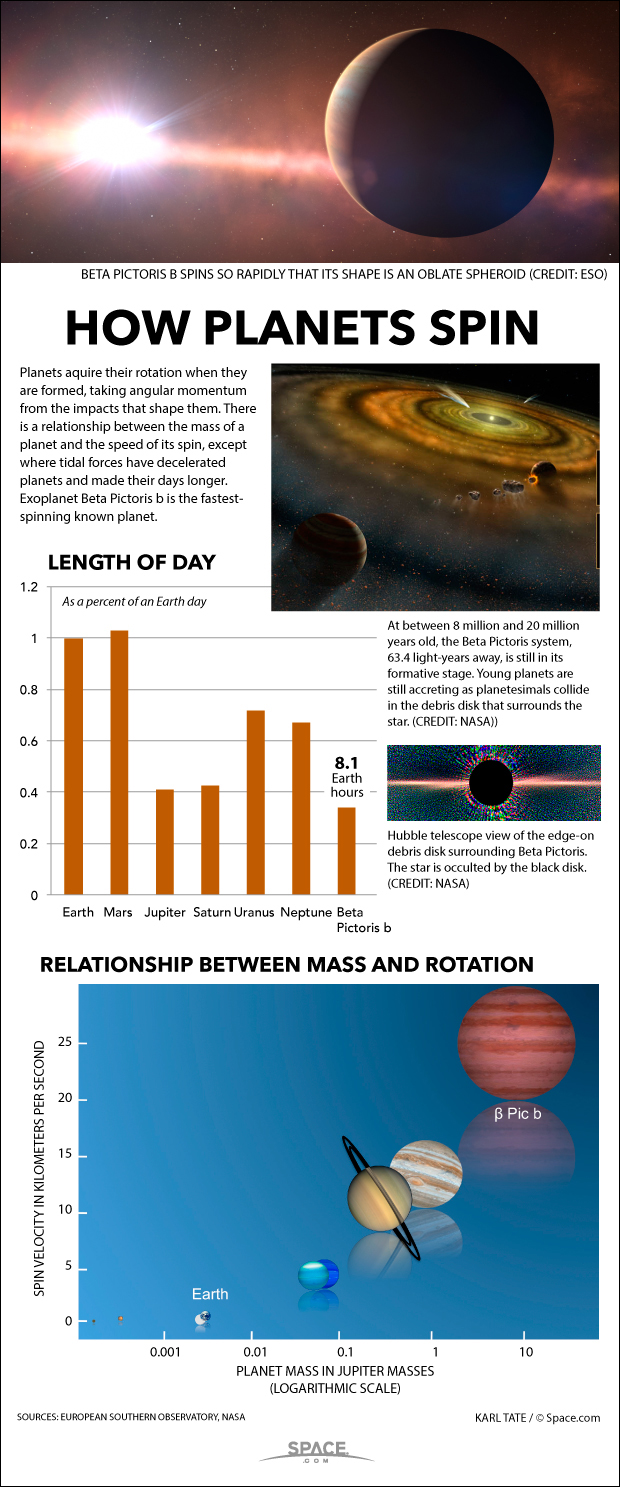
On Beta Pictoris b, a planet still forming nearly 64 light-years away, a day lasts only 8.1 hours. See how Beta Pictoris b spins so fast in this Space.com infographic. [Read the Full Story Here]
Mass and Rotation Speed of Planets Graph
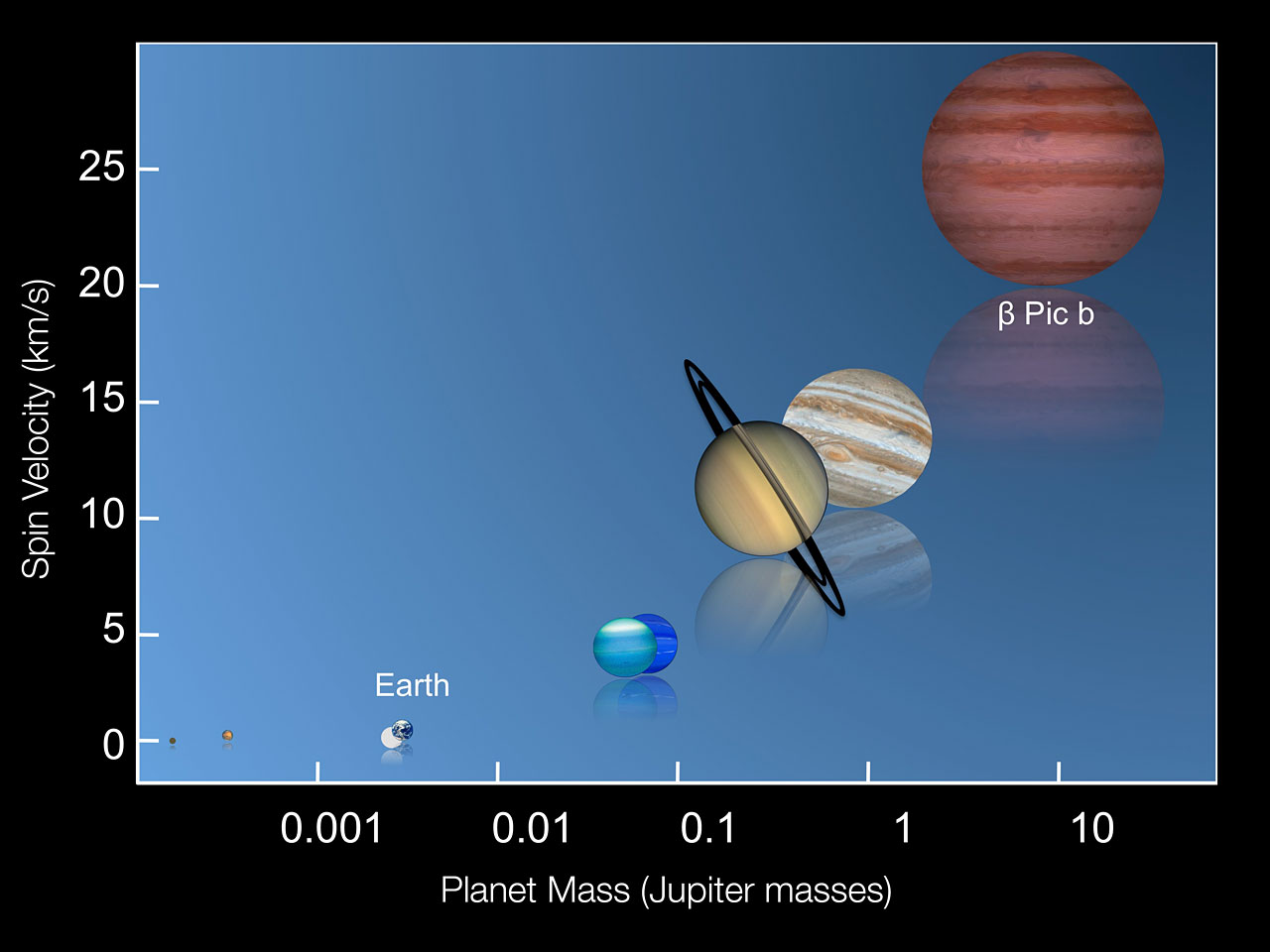
This graphic shows the rotation speeds of several of the planets in the Solar System along with the recently measured spin rate of the planet Beta Pictoris b. [Read the Full Story Here]
Beta Pictoris b
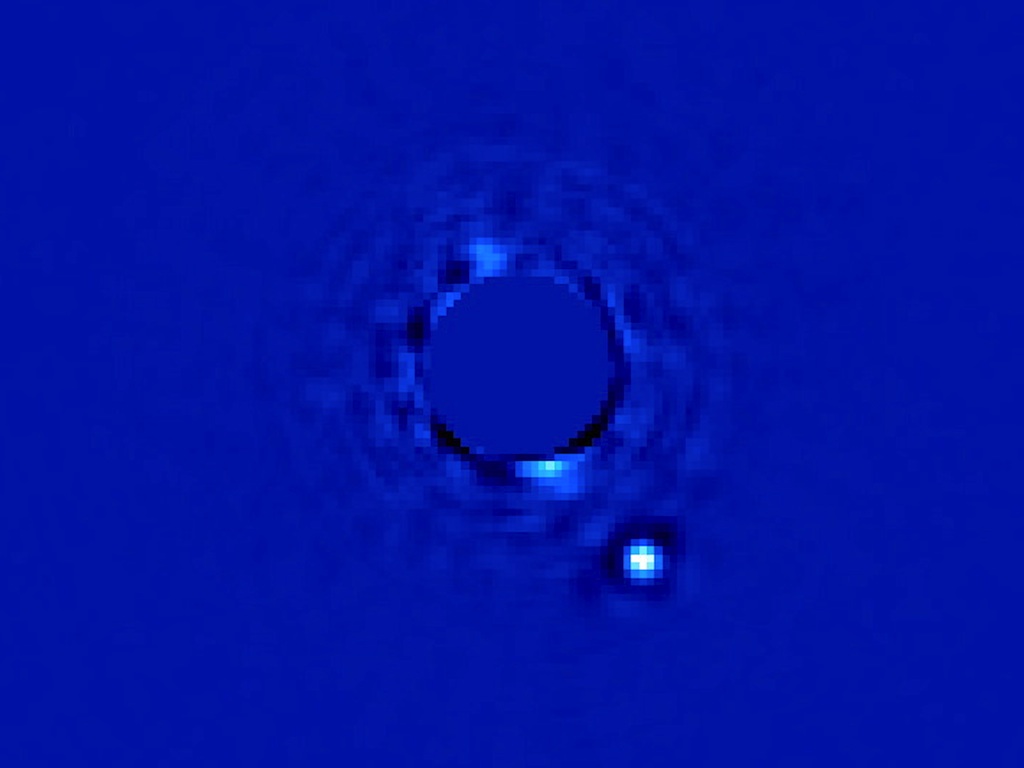
Gemini Planet Imager’s first light image shows Beta Pictoris b—a planet orbiting the star Beta Pictoris. The star, Beta Pictoris, is blocked in this image by a mask so its light doesn't interfere with the light of the planet. [Read the Full Story Here]
ALMA Observations of Beta Pictoris Preferred Model Illustration
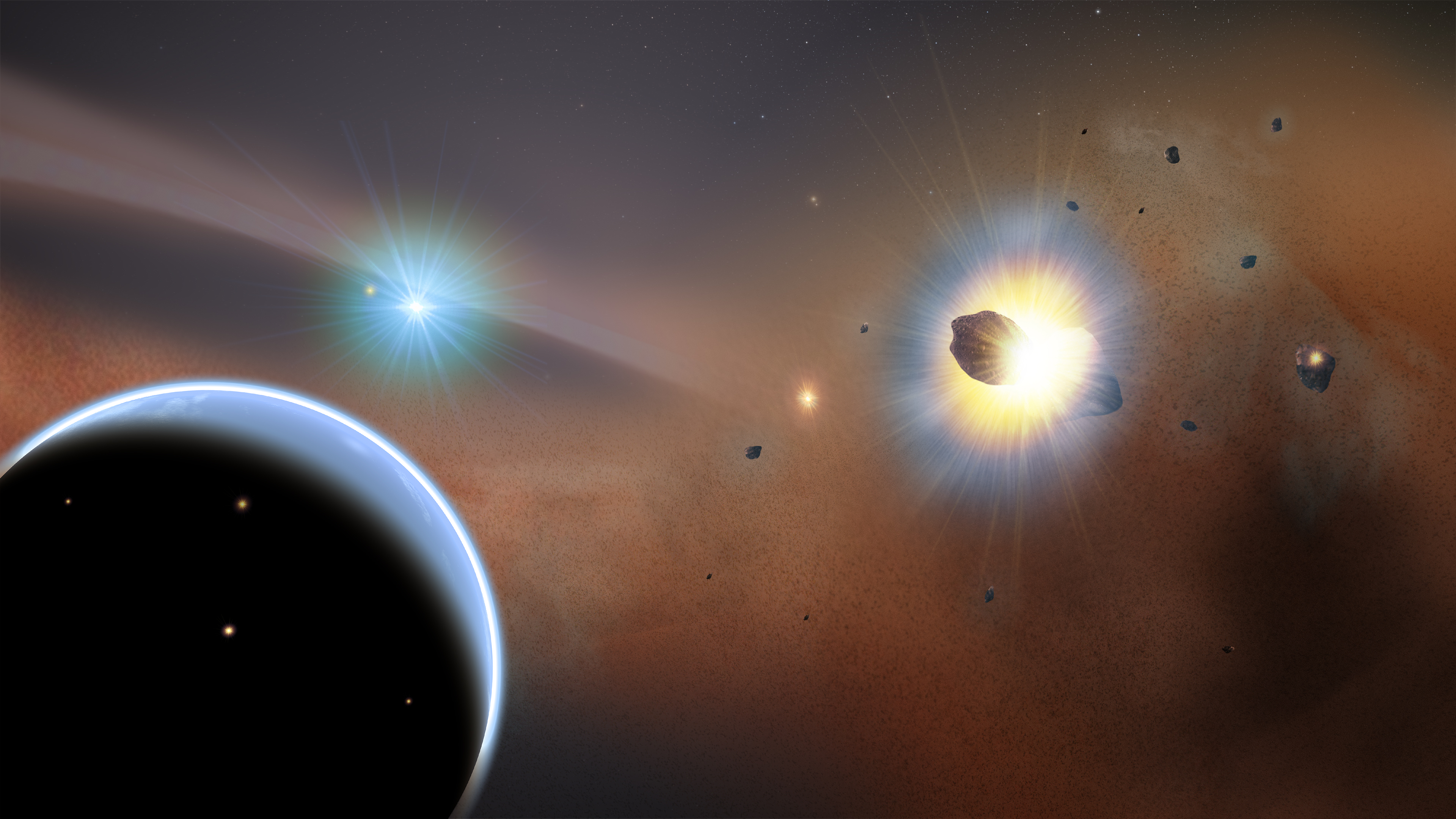
This artist's concept illustrates the preferred model for explaining ALMA observations of Beta Pictoris. At the outer fringes of the system, the gravitational influence of a hypothetical giant planet (bottom left) captures comets into a dense, massive swarm (right) where frequent collisions occur. [Read the Full Story Here]
Beta Pictoris Mystery Planet Evidence: ALMA
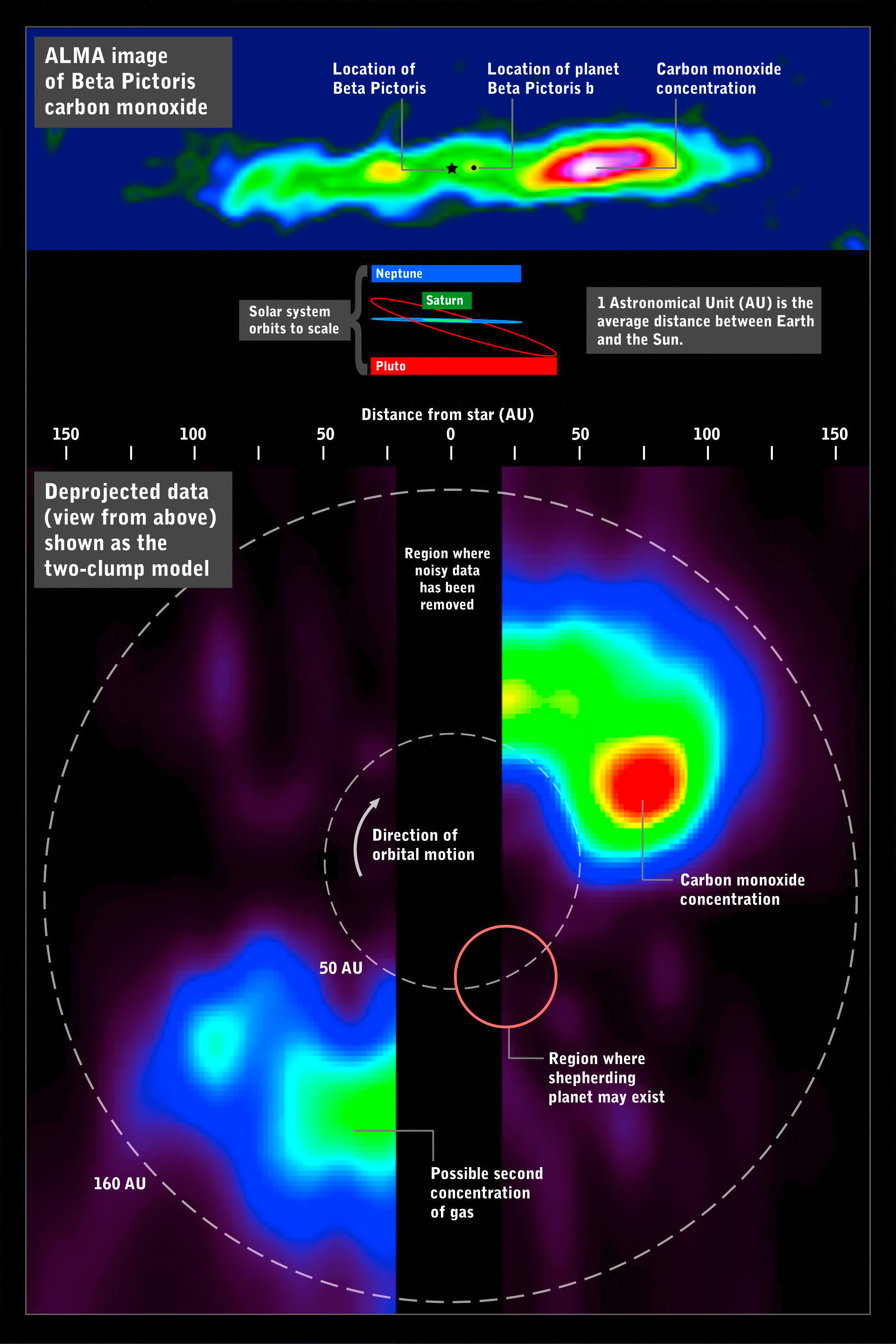
The ALMA radio telescope image of carbon monoxide around the star Beta Pictoris (above) can be deprojected (below) to simulate a view looking down on the system, revealing the large concentration of gas in its outer reaches. For comparison, orbits within our solar system are shown for scale [Read the Full Story Here]
Get the Space.com Newsletter
Breaking space news, the latest updates on rocket launches, skywatching events and more!
Map of the Sky Around Beta Pictoris
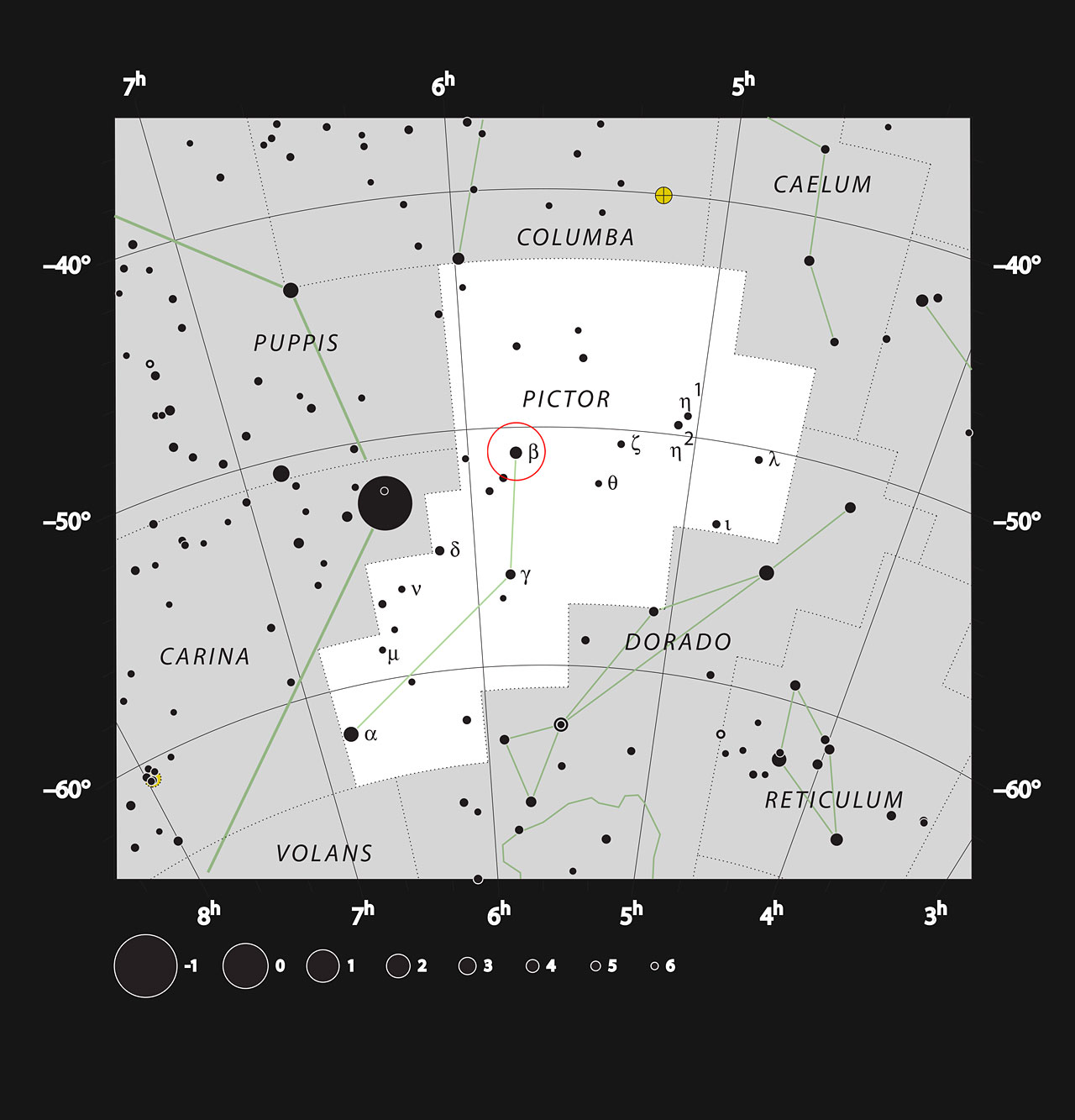
The position of the star Beta Pictoris is marked with a circle on this chart of the constellation Pictor (The Painter’s Easel). As indicated by its name, this is the second brightest star in its constellation. Together with most of the stars marked on this chart, it can be seen in a dark sky with the unaided eye. [Read the Full Story Here]
Join our Space Forums to keep talking space on the latest missions, night sky and more! And if you have a news tip, correction or comment, let us know at: community@space.com.

Space.com is the premier source of space exploration, innovation and astronomy news, chronicling (and celebrating) humanity's ongoing expansion across the final frontier. Originally founded in 1999, Space.com is, and always has been, the passion of writers and editors who are space fans and also trained journalists. Our current news team consists of Editor-in-Chief Tariq Malik; Editor Hanneke Weitering, Senior Space Writer Mike Wall; Senior Writer Meghan Bartels; Senior Writer Chelsea Gohd, Senior Writer Tereza Pultarova and Staff Writer Alexander Cox, focusing on e-commerce. Senior Producer Steve Spaleta oversees our space videos, with Diana Whitcroft as our Social Media Editor.









